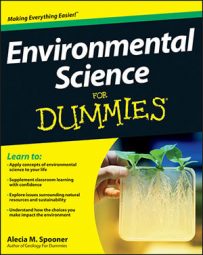Cogeneration is a method of energy conservation that involves the production of two types of energy at a single power plant. The ugly truth is that human beings waste a lot of energy. Although some energy is lost due to the nature of energy transfer and entropy, humans waste an almost equal amount (nearly 40 percent) in the processing, transportation, and overall use of energy.
Energy efficiency or conservation refers to the process of reducing the amount of energy that’s wasted, and some scientists consider it an energy source of its own. Rather than capturing more energy from the sun, water, or fossil fuels, energy efficiency allows you to capture it before it’s wasted and to put it to good use.
Industrial plants that produce energy have long been the guiltiest of wasting energy. For example, most fossil fuel-burning plants that produce electricity release large amounts of heat into the environment as an unwanted, wasted byproduct. However, those same plants could capture this heat energy and put it to work through cogeneration technology.
Cogeneration is the production of two types of energy at a single plant. Most commonly, a plant produces both electricity and steam or hot water. Ideally, the plant can use the steam or hot water energy nearby so that it doesn’t lose much energy during transport.
Cogeneration improves energy efficiency from 30 percent energy capture to almost 90 percent, and it reduces carbon emissions. Instead of using twice the amount of fossil fuels to double the energy output, cogeneration creates a two-for-one energy production deal. Power plants that are located close to the buildings they supply power to can easily use cogeneration to supply electricity for lighting and hot water or steam for heating.
But in the past 50 years, as urbanization and suburban development has expanded across the landscape, power suppliers have moved farther and farther away from the buildings they supply as the idea of living or working right next to an industrial power plant has become unappealing to families who enjoy the fresh air and green spaces of a suburban landscape.
As a result, using the steam or hot water cogenerated with electricity isn’t as cost-effective as it used to be because it requires longer transportation, during which much of the energy is lost.
The good news is that power plants that do use cogeneration today are much cleaner, safer, and less toxic than they used to be. Also, the benefits of reducing carbon emissions and conserving huge amounts of energy outweigh the possible downside of locating them closer to urban areas.

